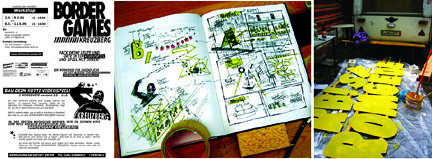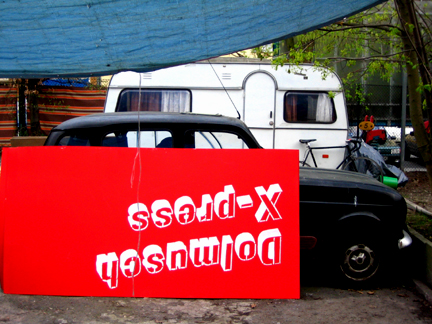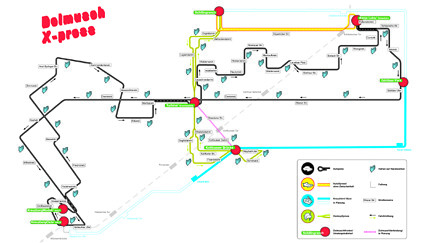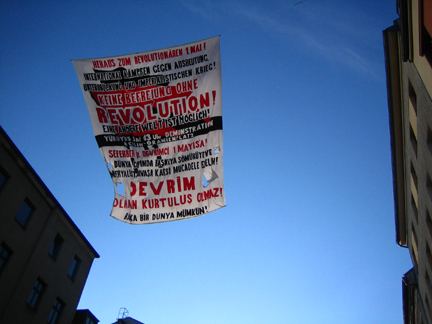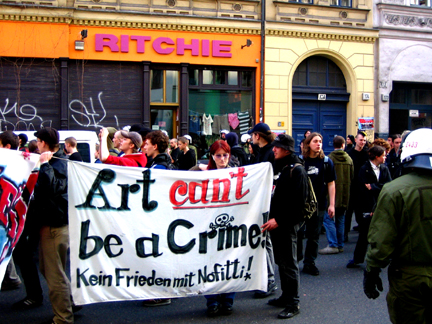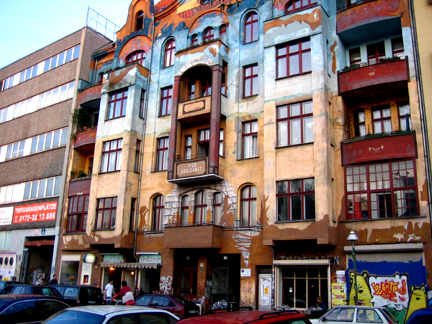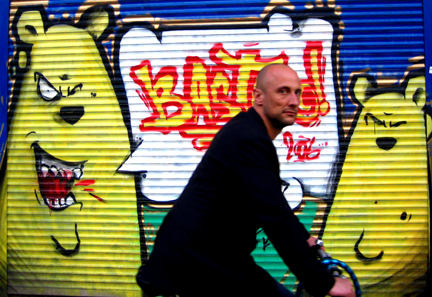Dolmusch X-press unfolded.....
Tuesday, May 23, 2006Apart from helping at the Bordergames workshop……..I dressed as a travel agent and gave out information in flawless English at the Reiseburo // went on an ‘unofficial’ teenager tour of Kreuzberg, which ended with a rap battle in parking garage // consumed many sausages and beer at the scaffolds of Exyzt, which projected video from a camera on a helium balloon above it // danced at an endless round of parties which migrated nightly between the different ‘hotspots’ on scraps of public land along the Dolmusch route.
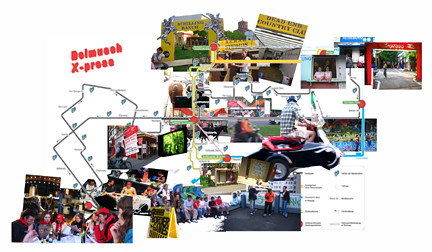
I’m uncertain how you might measure the success of the project: by the number of people who experienced it? whether they had a good time? whether they learnt something new about their city? by the range of people that came together to make it happen? the fact that it pissed off the taxi monopoly in Kreuzberg? that the Green party now wants to run a Dolmusch system to the new train station in the centre of the city?
RE: Bordergames. A number of promising contacts were made with people connected to youth clubs and educational initiatives in the city so that BorderGames Berlin is generally considered to be a work-in-progress. Still, there should be something to download off the Internet in a couple of weeks here. More importantly I am a celebrity in Berlin (see below for more details). I’m not sure what the article says as my German is still pretty weak, nor can I remember what I was so surprised by on the computer screen.
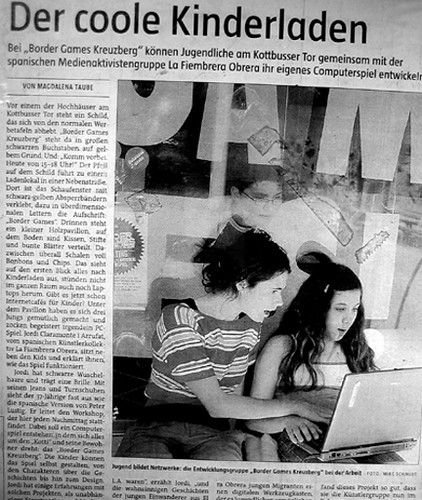
The Dolmusch process opened up some interesting questions for me as well as introducing me to some catchy jargon like ‘urban software’ and ‘performance architects’. Paradoxically after a year of obsessing over design processes which more effectively engage social and political ‘immaterial’ issues I found myself slightly disappointed by the material content of the project. But particularly now it’s over and life is ‘back to normal’ I’m appreciating what an invigorating network of exchange I was part of for two weeks.
Meanwhile I have transferred to working for a few days on another raumlabor project, involving shockhorror, CAD work and office hours at the office in Almstadtstrasse. This experience feels a lot more familiar. The project is a quirky installation for a cultural congress in Frankfurt - a series of almost-cube, moveable, adaptable structures for hosting films, talks, club nights, kids activities - fun but definitely ‘off-topic’.
I’ve also enjoyed two family visits that inched me out into areas of Berlin not yet explored. Activities divided neatly between museums (Mum) and shopping (Hattie).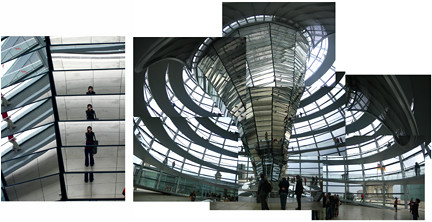
Also of Note // DesignMai (so-hip-it-hurts design exhibit……limited content further obscured by……a hazy fog of uptempofusionbeats and fruity beer) // Belle and Sebastian concert! Yey! filled me with an overwhelming sense of well-being // ‘Fantastic Norway’: exhibit about some Norwegian architects who took a red caravan around small towns in Norway, from which they served waffles and coffee and engaged people in dialogues about the future of their towns. The exhibit was definitely presenting their working method (anthropology meets architecture) rather than any output……so it will be interesting to see what develops in the near future.
I also got the chance to look around and hear the history of K-77, a commune which was first squatted in the 1990’s through a theatrical intervention (this confusion between squatting and art allowed them to buy the time they needed to negotiate with the local authorities). The government eventually paid for 80% of the renovation work………the wonderful days of the welfare state! Fifteen years later the house is a cosy warren of earthern walls and endless doorways. In both the communes I’ve seen here the most inspiring aspects have been the communal spaces – big generous kitchens with giant dinner tables, yoga studios with sprung wooden floors, collective libraries carved out of lofts, roof terraces and alternative performance and film spaces at street level.
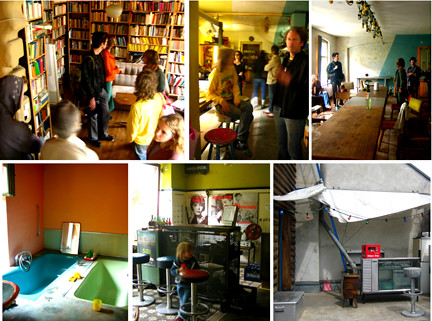
I also discovered that the street with the slightly eccentric buildings I biked past most days in Kreuzberg form a veritable starchitect gallery of Koolhaas, Eisenman, Hedjuk,Abrahim, Rossi and Sauerbruch Hutton. Hmmmm, what a well-trained eye I have. Not to mention I found out I live round the corner from an Alvaro Siza housing block, complete with some telltale curves, an odd column and a kindergarten covered in grafitti….telltale of course once all the details were pointed out to me.
And in Terms of What’s Next: Stalker, the group in Rome I’m meant to be joining next week are not responding to my most recent emails! Anyone know how else to contact them? And otherwise PLAN B. Options include staying in Berlin where there is plenty more fertile ground to mine. Please leave suggestions in the comments section. In the meantime I wanted to try and cross paths with a couple of other architecture collectives here. One is Pankof Bank. I sent the usual email out into the ether to find out that one of its members is a fellow Cambridge alumni, Sam Causer!
